Understanding the Financial Impact of Ring Setting Changes
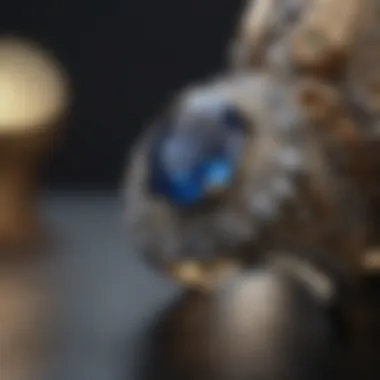
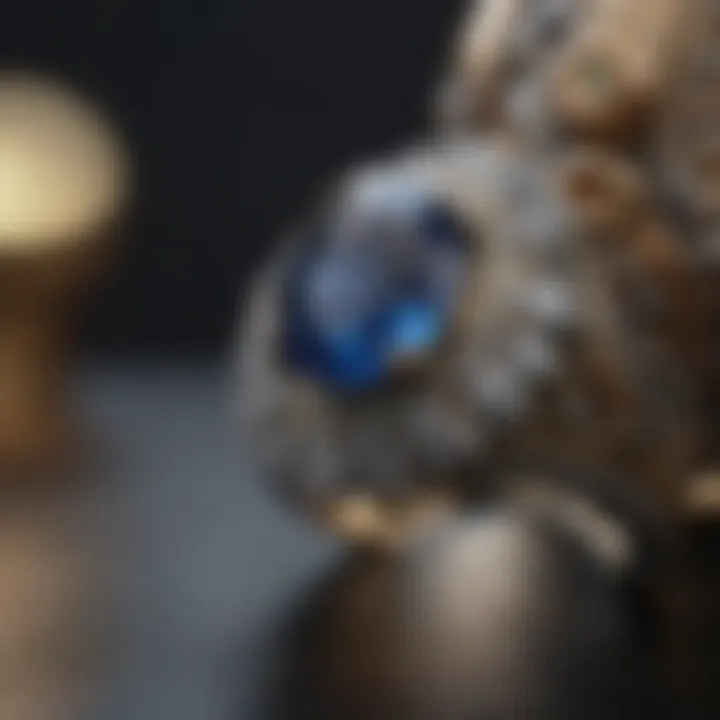
Intro
Changing the setting of a ring is more than just a design choice. It carries significant financial implications that can affect both the value of the piece and the owner’s wallet. Understanding these costs is essential for anyone considering this alteration. Whether for a gemstone enthusiast wanting a fresh look or a collector aiming to enhance value, knowing the ins and outs helps in making well-informed decisions.
Gemstone Overview
Definition and Origins
Gemstones have been cherished for centuries, often representing beauty, status, and symbolism. A gemstone generally refers to a precious or semi-precious stone that has been cut and polished for use in jewelry. The origins of these stones can be traced back to ancient civilizations where they were used in various cultural practices and beliefs.
Historical Significance
Throughout history, different cultures have attributed unique significance to certain gemstones. Diamonds, for example, symbolized strength and purity. Emeralds were linked to fertility and rebirth. Understanding this significance can add layers of meaning when considering a change in setting. Choosing a new setting may also relate to the gemstone's history, perhaps enhancing its value or personal significance.
Gemstone Properties
Hardness and Durability
The Mohs scale, ranging from 1 to 10, represents the hardness of gemstones. This scale helps to assess how well a gemstone can withstand scratches and wear. Diamonds score a 10, making them the hardest known natural material. In contrast, softer stones like opals, which score between 5 and 6, are more susceptible to damage. Therefore, when altering a ring's setting, it is crucial to consider the durability of the gemstone involved.
Color and Clarity
Color and clarity play pivotal roles in a gemstone's overall appeal and value. Gemstones are evaluated for their hue, tone, and saturation. Clarity examines the presence of inclusions or blemishes. A higher quality gemstone typically leads to a higher valuation, which must be considered when selecting a new setting. Owners may wish to change settings to better highlight a stone’s natural beauty or to adapt to changing trends in jewelry design.
"The value of a gemstone can increase significantly if appropriately set in a style that enhances its key properties."
The interplay between setting and gemstone properties is vital in determining the financial ramifications of alterations.
Understanding Ring Settings
Understanding ring settings is pivotal for anyone involved in the realm of gemstones and fine jewelry. It encompasses various aspects which are essential for both aesthetic appeal and financial considerations. The choice of a ring setting influences not just the overall design but also the durability and security of the gemstone it houses. Therefore, comprehending the intricacies of ring settings sets the foundation for informed decisions, particularly when alterations are being considered.
Definition of Ring Settings
A ring setting is the part of a ring that holds the gemstone in place. It consists of a metal framework designed to secure the gemstone while enhancing its visibility and brilliance. Common materials for ring settings include gold, platinum, silver, and other alloys. The design of a setting can range from minimalistic to elaborate, affecting not only the ring's aesthetic appeal but also its market value.
Different types of settings serve unique purposes and can dramatically alter how a gemstone looks. For instance, a prong setting allows maximum light exposure to a diamond, enhancing its sparkle, while a bezel setting provides more security for softer stones. Understanding these definitions is essential for anyone considering changes to their ring settings, as each choice carries its own set of implications.
Importance of a Good Setting
A good ring setting does more than just hold a gemstone; it plays a crucial role in the longevity and aesthetic of the piece. An expertly crafted setting protects the gemstone from potential damage, especially in rings worn daily. It ensures the durability needed for everyday wear and enhances the visual impact of the stone. Moreover, settings can significantly influence resale value. A well-designed setting not only complements the gemstone but adds a layer of sophistication that buyers look for.
When contemplating changes, one must also consider current trends in jewelry design. A popular setting style can increase a ring's market appeal and potentially its valuation over time. Thus, understanding the implications of ring settings is integral for making educated decisions, whether for personal enjoyment or as an investment.
Factors Influencing the Cost of Changing Ring Settings
Changing a ring's setting involves various financial considerations, each significantly affecting the overall cost. Understanding these factors is crucial, not just for budgeting but also for assessing the long-term value of the ring. The distinctive elements that determine the cost include the material used for the setting, the complexity of the design, the type of gemstone involved, and the labor charges associated with the changes.
Material of the Setting
The material of the ring setting plays a fundamental role in the cost involved. Precious metals such as platinum, gold, and silver have varying market values which fluctuate based on demand and availability. For instance, platinum is considerably more expensive than gold and silver due to its rarity and properties that make it an excellent choice for settings that need durability. Additionally, the choice of metal can influence the aesthetic appeal of a piece, leading some consumers to prioritize certain materials despite the cost.
- Gold Variants: The cost can change based on whether it is yellow, white, or rose gold, and the karat weight significantly impacts pricing. Higher karat gold means a greater amount of pure gold, which raises the value.
- Alternative Metals: Materials like titanium or tungsten are growing in popularity for their strength and lighter weight, often leading to a more budget-friendly setting change.
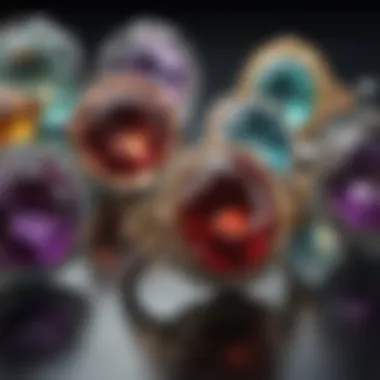
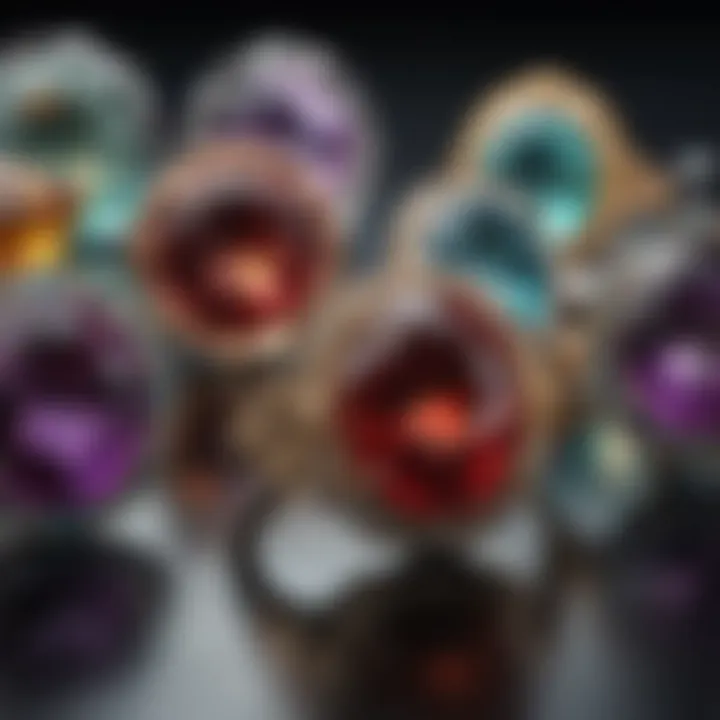
Complexity of Design
The intricacy of a ring's design is another factor that influences cost when changing settings. Simple settings, like a basic prong arrangement, will generally be less expensive compared to intricate designs like pavé or halo settings which require more skill and time to craft. The following considerations are relevant:
- Time Investment: Complex settings can significantly increase the duration required to complete the work. Jewelers may charge more for time-consuming designs, which adds to the overall bill.
- Potential Repairs: More complicated designs may have additional components that can wear out or need adjustments over time, influencing future costs as well.
Gemstone Type
The type of gemstone you are setting also affects the overall cost of changing a ring's setting. Diamonds, for example, are generally more expensive to set due to their value and the care needed to secure them properly. Moreover, the following points highlight the financial implications:
- Hardness and Durability: Certain stones can be more challenging to work with, requiring specialized tools and techniques that can drive up the expense.
- Size and Shape: The physical dimensions of the gemstone can influence both the setting size and the difficulty in mounting it securely, which can lead to varied costs.
Labor Costs
Labor costs are essential to consider when evaluating the expenses related to changing a ring setting. Skilled jewelers often charge by the hour or have a flat fee depending on the work required. Some factors that affect labor costs include:
- Experience Level: An experienced jeweler might charge more, but their expertise can ensure a higher quality finish and durability.
- Location: Charges can vary significantly based on geographical location. Urban jewelers may have higher fees compared to those in rural areas, reflecting different costs of living.
In summary, the financial implications of changing a ring's setting depend heavily on factors like material choice, design complexity, gemstone type, and labor costs. Being informed about these aspects can aid consumers and collectors in making educated decisions about their jewelry.
Common Types of Ring Settings
Understanding the common types of ring settings is essential when considering changing a ring's setting. Each style offers unique benefits and impacts the overall aesthetics, durability, and security of the rings. For gemstone enthusiasts and collectors, the choice of setting can not only influence the visual appeal but also the market value of the piece. Below are detailed descriptions of some popular ring settings, along with their significance in terms of financial implications.
Prong Settings
Prong settings are perhaps the most well-known type of ring setting. This style secures the gemstone using metal projections or prongs. Typically, there are four to six prongs holding the stone in place. This method is beneficial because it exposes the gemstone to maximum light, enhancing its brilliance. However, there are financial factors to consider. The cost of a prong setting includes the amount of precious metal needed and the labor involved in securing the stone.
The open design of prong settings means that if the prongs wear down over time, it may lead to the risk of losing the gemstone, thus incurring additional replacement or resetting costs.
Bezel Settings
Bezel settings encircle the stone with a metal rim, providing a secure hold that covers the edges. This type can offer enhanced durability, making it an excellent option for those with active lifestyles. The financial implications of a bezel setting can be two-fold. On one hand, installing a bezel can be more costly due to the intricate metalwork required. On the other hand, such a design reduces the likelihood of losing the gemstone, potentially saving costs related to repairs or replacements down the line.
Tension Settings
Tension settings use the strength of the metal band to hold the gemstone in place, creating an illusion that the stone is floating. This modern design is visually striking and allows for a clean, minimalist look. The cost associated with a tension setting primarily revolves around the engineering and quality of the materials used. A well-made tension setting can add considerable value to the ring; however, if not designed correctly, it may compromise the stone's integrity, leading to potential financial repercussions if the gemstone is damaged.
Pavé Settings
Pavé settings employ small diamonds or gemstones set closely together to create a sparkling surface on the band. This intricate design enhances the appeal of the main stone and can significantly increase the overall value of the ring. However, pavé settings can be costly due to the high number of tiny stones needed and the careful work required. An important consideration is the increase in maintenance costs. Cleaning and securing a pavé setting can mean more frequent visits to a jeweler, which can add up over time.
Understanding the different types of ring settings is crucial for anyone looking to change their ring setting. Each design comes with its specific financial implications that can affect the overall cost of ownership. An informed choice allows for a better alignment between personal preference and investment, ultimately influencing both aesthetic enjoyment and financial stability.
Evaluating the Decision to Change a Ring Setting
Changing a ring setting is a significant decision that involves multiple financial and emotional considerations. The ring setting often holds not just aesthetic appeal but also represents personal values, memories, and commitments that may be difficult to quantify. However, understanding the implications of altering a ring's setting is essential for both consumers and jewelers. In this section, we delve into several critical facets surrounding the decision-making process related to changing ring settings.
Reasons for Changing Settings
There are various motivations for considering a change in a ring setting. The most common reasons include:
- Aesthetic Improvement: Over time, personal tastes may change. An individual may find that their current setting no longer fits their style or the latest design trends.
- Damage or Wear: A setting may become damaged due to wear and tear. If it no longer holds the gemstone securely, a change is not just preferable but necessary.
- Symbolic Reasons: A relationship may evolve, prompting a desire to redesign a ring to reflect the current stage in life, such as anniversaries or major milestones.
Each of these factors can impact the cost associated with changing the setting but also brings intrinsic values that are meaningful to the wearer.
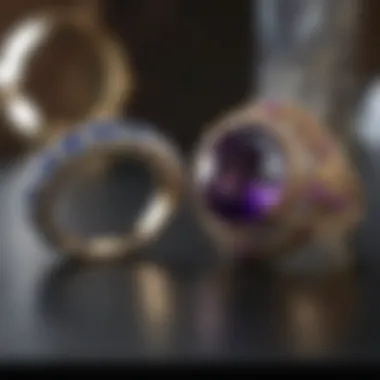
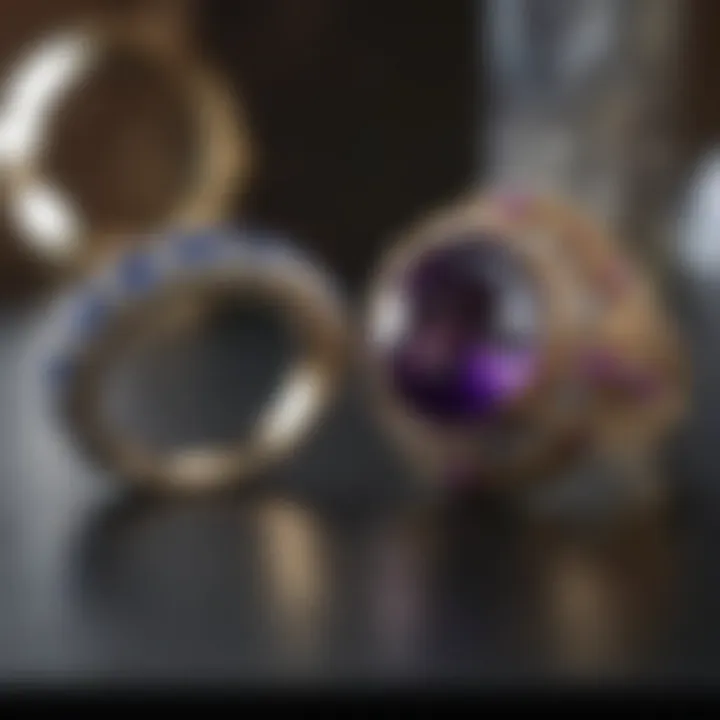
Assessing Personal Preferences
Individual preferences play a pivotal role in the decision-making process. Factors to consider include:
- Style Preference: Different settings serve different aesthetic effects. Some individuals may prefer a more classic look, while others may lean toward modern or unique designs.
- Comfort and Wearability: It is important to ensure that the new setting is comfortable and suitable for daily wear. Test driving different styles can help decide what feels right.
- Compatibility with Existing Gemstones: If the wearer desires to keep the original gemstone, it is crucial to determine which settings will complement its size and shape while providing security.
Personal preferences are highly subjective and must align with both the emotional and financial aspects of the decision.
Sentimental Value of a Ring
Rings often carry deep sentimental value. This value can transcend financial measurements in several ways:
- Emotional Attachment: Rings can symbolize significant moments, such as engagements or anniversaries. The emotional weight of these symbols can make changing the setting feel daunting.
- Heritage and Family Traditions: Rings can be heirlooms, passed down through generations. Altering such a piece can raise concerns about undermining its historical significance.
- Investment Consideration: For some, a ring is viewed as an investment that may appreciate in value over time. This perspective can complicate the decision to change the setting if it risks devaluing the piece.
“Understanding the sentimental value of a ring is as essential as recognizing its financial implications.”
In summary, evaluating the decision to change a ring setting encompasses a wide variety of factors, including personal style, emotional significance, and practical considerations. Taking the time to reflect on these aspects can aid individuals in making a choice that honors both their financial and sentimental investment.
Cost Breakdown of Changing a Ring Setting
Understanding the cost breakdown of changing a ring setting is crucial for anyone contemplating such an adjustment. The financial implications extend beyond mere material expenses. Recognizing how different factors contribute to the total cost can aid in making informed decisions. This breakdown encompasses material costs, design fees, and additional considerations like gemstone resetting and polishing. Each element plays a significant role, affecting the overall budget and the aesthetic quality of the final product.
Material Costs
Material costs are a foundational component in determining the overall financial implications of changing a ring setting. The type of metal used, whether it’s gold, platinum, or silver, significantly influences the price. Precious metals have varying market values, affecting the cost. For example, platinum tends to be more expensive than gold due to its rarity and density. Additionally, the overall weight of the material can increase costs further.
Furthermore, the choice of gemstones, if included in the setting, also contributes to the material costs. High-quality gemstones will naturally amplify the price. This balance between metal choice and gemstone selection is critical, as it directly relates to both the aesthetic outcome and the final financial burden.
Design and Customization Fees
Design and customization fees represent another essential aspect of the cost breakdown. Creating a bespoke design often incurs additional charges. This fee can vary based on the complexity of the design. Unique elements, like intricate patterns or custom settings, necessitate more time and skill from the jeweler, impacting the overall cost.
Moreover, custom designs can also carry a premium due to their uniqueness. For some, this uniqueness is well worth the investment. Others may opt for pre-designed settings to minimize costs.
Additional Costs to Consider
When changing a ring setting, it is important not to overlook additional costs that can arise during the process. These can include gemstone resetting and polishing of the finished product.
Gemstone Resetting
Gemstone resetting is a key aspect that can significantly impact the overall expenses. This process involves removing the gemstone from its existing setting and placing it into a new one. It is essential to ensure that the gem remains secure and undamaged throughout this process. The resetting procedure can vary in cost depending on the type of gemstone and the complexity involved.
Additionally, protecting the integrity of the gemstone during the resetting is paramount. Some settings may demand special care to avoid damaging the stone. As a result, gemstone resetting is popular among owners looking to refresh a piece of jewelry without acquiring new stones entirely. This option provides a blend of cost-effectiveness and personalization, making it a favorable choice in changing ring settings.
Polishing and Finishing
Polishing and finishing contribute to the final appearance of the ring after the setting has been changed. This process includes smoothing out any scratches and enhancing the overall shine of the metal. Polishing may seem like a minor detail, but it can play a substantial role in the ring's visual appeal. The fees for polishing are often relatively low compared to other expenses, yet they are crucial for ensuring that the final piece looks its best.
It is vital to consider these polishing costs when budgeting for a ring setting change. Proper finishing enhances the beauty of the new design, ensuring that the jewelry maintains its luster.
In summary, understanding the cost breakdown of changing a ring setting demands careful consideration of various factors. By recognizing material costs, design fees, and additional elements like gemstone resetting and polishing, consumers can approach the decision more informed. This leads to a balanced consideration of both financial and aesthetic outcomes.
Considerations for Jewelers and Consumers
Finding a Qualified Jeweler
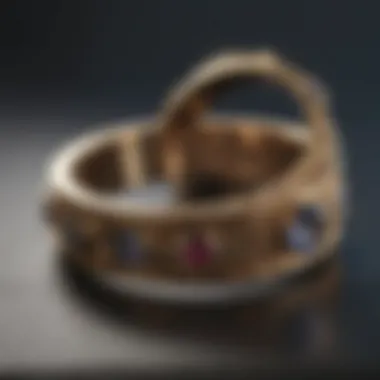
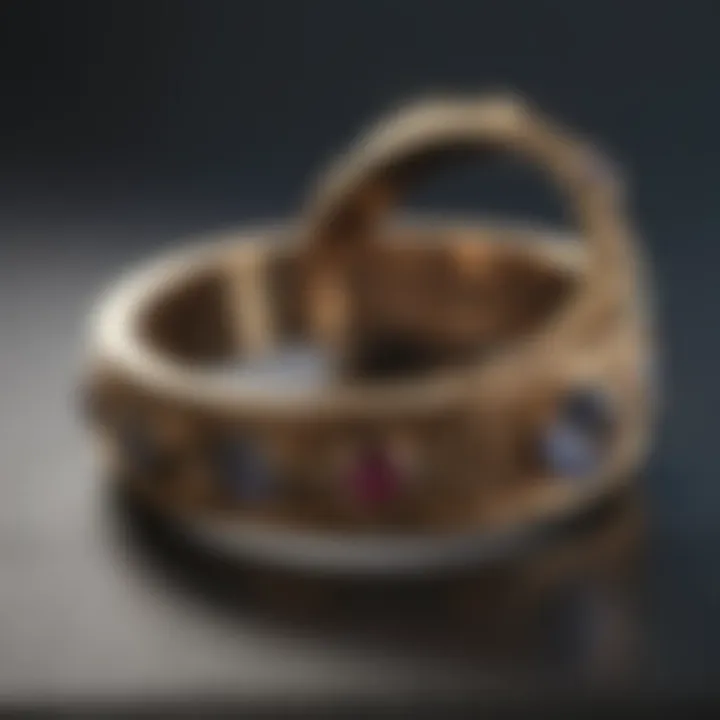
The importance of selecting a qualified jeweler cannot be overstated. A professional's expertise can significantly influence the quality of the work done and the overall experience. To find a qualified jeweler, consider the following:
- Research Their Reputation: Look for reviews on platforms such as Reddit or Facebook. Positive testimonials can indicate reliability and craftsmanship.
- Qualifications and Certifications: Certifications from prestigious organizations signal a jeweler’s commitment to their craft. Ensure they have the necessary training and experience for ring setting alterations.
- Portfolio of Past Work: Examine examples of previous work. A jeweler who has experience with the specific type of setting you desire is more likely to achieve satisfactory results.
- Consultation Services: Many jewelers offer consultations for free. Use this opportunity to assess their knowledge and approach.
Creating a Budget
Crafting a budget for changing a ring setting is crucial. A clear financial plan helps manage expectations and reduce stress. When developing your budget, keep in mind:
- Understanding Costs: Familiarize yourself with all potential costs, including materials, design fees, and labor. Each element contributes to the total sum.
- Prioritize: Decide how much you are willing to allocate to each component. It may involve making compromises, especially if your ideal choices exceed your budget.
- Hidden Fees: Always inquire about possible additional charges that can arise during the process. Knowing these in advance helps to avoid surprises later.
- Get Multiple Quotes: Consult multiple jewelers to receive diverse quotes. This not only provides a range but also helps you gauge the market rate.
Duration of the Process
The duration of changing a ring setting can vary based on several factors. Understanding these will set realistic expectations:
- Complexity of the Design: More intricate designs usually require a longer time for the jeweler to execute. Thus, plan accordingly.
- Jeweler's Workload: A busy jeweler may take longer to complete your request. It is wise to discuss timelines upfront.
- Gemstone Issues: If a gemstone needs resetting, additional time may be needed to ensure it is handled safely.
- Communication: Clear and open communication with the jeweler is essential. Regular updates can help you remain informed about the process and any unforeseen delays.
The Impact of Setting Changes on Gemstone Integrity
Changing a ring's setting can have several implications for the integrity of the gemstone it houses. The importance of this topic resides in the understanding that even the most well-designed settings may inadvertently expose gemstones to risks. It is crucial for both jewelers and consumers to be aware of how a change in the ring setting affects not only the aesthetics but also the preservation of the gemstone itself.
Potential Risks Involved
When altering a ring setting, various risks can arise that could compromise gemstone integrity. One significant concern is the security of the stone. A poorly executed setting change can lead to the gemstone becoming loose or even dislodged entirely. This loss not only impacts the emotional value attached to the ring but also incurs financial losses that may be substantial, depending on the gemstone.
Additionally, many gemstones are sensitive to pressure and impact. If a stone is not properly secured, exposure to daily activities may lead to fractures or chipping. This is particularly true for softer gemstones, like opals or pearls, which require more delicate handling compared to hard gemstones like diamonds or sapphires. Engaging a skilled jeweler is imperative to mitigate such risks, as they understand the nuances in safeguarding each type of gemstone during the setting process.
A well-thought-out evaluation of the potential risks enables consumers to make informed decisions regarding their rings. Things to consider include:
- Type of gemstone and its durability
- Design complexity and how it affects security
- Quality of the craftsmanship during the setting change
Maintaining Control Over Gemstone Security
Once a decision has been made to change a ring's setting, maintaining control over the gemstone’s security becomes paramount. Ensuring the stone remains secure during and after the modification process is essential for safeguarding its integrity.
One effective way to maintain control is to conduct thorough research before altering a setting. This includes choosing a jeweler with a proven track record in gemstone care. Check reviews and ask for recommendations to ensure they are experienced with the specific type of setting you desire.
Moreover, consider asking for insurance or a warranty from the jeweler on the stone's condition post-setting change. This adds a layer of assurance regarding gemstone safety. It is also advisable to revisit the jeweler for regular checks after the change, allowing for any necessary adjustments to be made swiftly.
Ultimately, gemstone integrity is not just about the beauty of the piece but also about preserving its value and emotional significance. This requires attention to detail and a proactive approach to maintaining the stone's security.
"A gemstone's beauty is enhanced when its integrity is preserved. Pay attention to its security during every change."
Final Thoughts on Changing Ring Settings
Changing a ring's setting is a significant decision that carries both emotional and financial implications. Understanding these implications helps individuals make informed choices when it comes to enhancing or altering their precious jewelry. This section provides a comprehensive overview of the aspects to consider before proceeding with a change.
Evaluating Personal Sentiment
Personal sentiment is often the driving force behind changing a ring setting. Rings usually carry emotional value, often tied to special occasions such as engagements or anniversaries. As a result, the decision to alter this aspect should not be taken lightly. Ask yourself:
- What memories are linked to the current setting?
- Does the existing style still reflect personal taste?
- Are you prepared for the potential loss of sentimental attachment?
Each of these questions delves into personal motivations and can significantly sway the decision. If the intent is merely to refresh the look or due to a change in personal style, weigh this against the emotional connections attached to the existing piece. Keep in mind, sentimental value can often outweigh monetary considerations.
Weighing Aesthetic and Financial Factors
Aesthetic and financial factors must be carefully balanced in the decision-making process. When considering a change in a ring's setting, individuals must look at:
- The desired aesthetic effect: What look appeals to you? Are you drawn to classic styles or modern designs?
- The financial impact: Understanding the costs involved provides insight into what one can expect to invest in this change.
It is beneficial to prioritize openness in your vision while being realistic about your budget. Also, consider how different settings affect the ring's overall appearance; a simpler setting may allow for more intricate design features, while a more elaborate setting can significantly increase costs. Review any previous assessments of gemstone value, as these attributes can play a pivotal role in guiding your choices.



